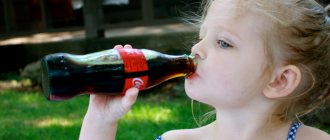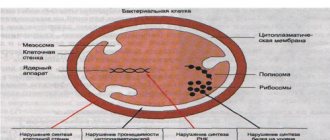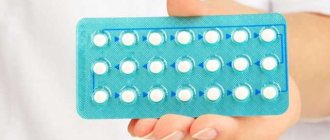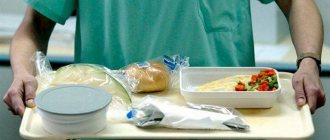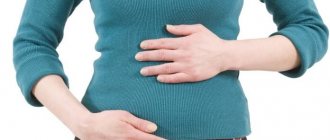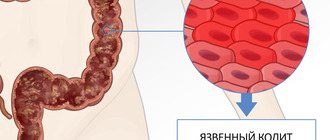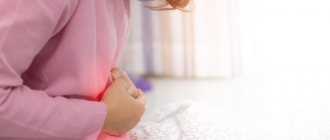How to treat intestinal infections with diet?
Regardless of which pathogenic microorganism provoked the development of the disease, therapy should begin with a complete abstinence from food. This means that during the acute stage of the disease, an adult can only drink water or rehydration solutions.
If the disease is not too severe, then it is permissible to drink sweet black tea - no more than 1.2 liters per day. In this case, a person should drink about 2.5 liters of water per day or even more. It is possible to use rice broth, rosehip or blueberry infusion passed through a sieve. All these drinks, in addition to replenishing the excreted volumes of fluid, are sources of vitamins and nutrients that the body so needs. Blueberries and rice water have the ability to bind harmful substances and remove them from the body, which allows you to quickly cope with the infection.
On the first day of illness, you can drink drinks that reduce the urge to vomit. This can be a mint decoction or homemade lemonade. To do this, mash lemon in a glass, pour hot boiled water over it and leave for a quarter of an hour. Add a teaspoon of honey to the drink. This drink is offered to the patient every 20 minutes, 2 tablespoons. When the acute phase of the disease is completed, you can move on to eating foods, but taking into account certain features of their selection and preparation.
Principles of nutrition for intestinal diseases
Nutrition for intestinal infection is the main condition for successful treatment. With a rational selection of products, you can recover and avoid the development of complications.
The principles of nutrition for intestinal dysbiosis are as follows:
- compliance with a strict drinking regime. With numerous vomiting and diarrhea, the body loses a lot of fluid and useful components. To prevent the development of such a process, you need to take at least two liters of fluid per day;
- complete refusal to eat for about a day. This process will prevent further poisoning of the body and significantly reduce the load on the weakened intestinal canal;
- maintaining a gentle diet. In the first two to three days, the diet should include only liquid food in the form of cereals, soups and broths;
- complete exclusion of foods that irritate the intestinal tract. This includes fast foods, semi-finished products, sweets, sour fruits, dairy and fermented milk products;
- restoration of lost vitamins and microelements.
Compliance with the above rules will help the patient quickly gain strength and overcome the unpleasant symptoms of the disease. You should not take large portions, as it is difficult for the digestive system to eat after an illness. If the recommendation is not followed, the body will simply reject all the food again.
What diet is indicated for intestinal infections in adults?
If a person is admitted to a hospital, then he is prescribed dietary table No. 4. This is a therapeutic nutrition system that is designed in such a way that it does not burden the digestive system, but saturates the body with nutrients.
The goals of table number 4 are:
- Sparing the gastrointestinal tract. Moreover, the sparing will be both chemical and mechanical.
- Reducing the degree of the body's inflammatory response.
- Reducing fermentation and putrefactive processes in the intestines.
- Restoration of intestinal function, regeneration of its mucous membrane.
The menu is complete and balanced. It contains a sufficient amount of protein, and carbohydrates and fats are slightly reduced. During intestinal infections, it is necessary to somewhat limit the consumption of table salt.
All products are offered to the patient in a semi-liquid or liquid consistency. Dishes should be neither hot nor cold. Acceptable methods of processing food are boiling and steaming. Before serving, be sure to grind rough food or grind it in another way. A person eats 5-6 times a day.
The average daily calorie content is equal to 1980 kcal. Salt per day should not be consumed more than 10 g. After the patient feels better, he is transferred to diet No. 4B, which involves a daily increase in the energy value of dishes to 3000 kcal. In this case, the dishes can already be cooked in the oven and stewed. However, product bans remain similar.
Nutrition for intestinal disease in adults
Recovery from an intestinal infection is a serious process. Although the disease subsides after five to seven days, the body still cannot return to normal for a long time.
A diet for intestinal infections in adults involves a complete refusal to take foods that can irritate the digestive canal thermally, chemically and mechanically. Therefore, products must enter the body in the form of a liquid consistency. At the same time, their temperature should be average.
It is better to steam or boil dishes. Must be crushed before use. The number of meals for intestinal infections should be from five to six times.
Calorie intake per day should not exceed two thousand calories. Sugar is limited to forty grams per day, and salt to ten grams.
On the first day, it is better to completely stop eating. Only water with a small salt content should enter the body. This will avoid dehydration.
What can adults eat? The menu is allowed to include:
- crackers based on white loaf;
- low-fat broths from fish, chicken, meat;
- scrambled eggs;
- water-based porridge in the form of rice, buckwheat, oatmeal;
- meat and fish dishes that are steamed or boiled;
- banana or apple puree;
- homemade jelly;
- slightly sweetened tea;
- decoctions of berries in the form of raspberries, currants, blueberries.
The diet after an intestinal infection excludes the consumption of certain types of foods. They lead to the development of unpleasant symptoms in the form of flatulence, gas formation, bloating, discomfort in the abdomen and diarrhea.
These include:
- fatty and gifted dishes;
- hot and spicy spices;
- smoked meats and canned food;
- black bread;
- porridge in the form of millet and pearl barley;
- dairy products;
- raw vegetable and fruit crops;
- mushrooms and nuts;
- dried fruits;
- legumes;
- various greens;
- sweets and baked goods in the form of chocolate, cookies, cakes, buns;
- carbonated, alcoholic and caffeinated drinks.
These foods should not be consumed for fourteen days. Even if it seems that the body has recovered, the above foods can lead to the re-development of intestinal dysbiosis.
Diet rules
In order for the patient to recover quickly, the following diet rules must be followed:
- Dishes should be easily digestible, they should not irritate the mucous membrane of the intestines and stomach, or burden the pancreas.
- Dishes can be boiled or steamed
- Before serving, the products are ground or pureed.
- The optimal food temperature is 33-36 °C.
- The optimal portion is 150-300 g, depending on the age and weight of the patient, as well as on his state of health.
Symptoms of intestinal infection
How to identify an intestinal infection?
It is necessary to know its symptoms and how it manifests itself in humans. Develops from six to forty-eight hours. Here are the most common signs of this disease:
- Intoxicating:
- be sick;
- weakness;
- headache and dizziness;
- body aches.
- Temperature increase.
- Gastritis:
- my stomach hurts;
- vomit;
- loss of appetite.
- Enteritic:
- Colitic:
- aching pain in the lower abdomen;
- pain during defecation.
Sometimes these symptoms can be combined with each other.
Diet for intestinal infections in children
The general principles of feeding a child during intestinal infections are similar to the principles by which an adult patient eats. However, you must take into account the age of the baby.
During illness, children are no longer given dairy products, although in normal times they should always be on the menu. The fact is that milk contains milk sugar - lactose. Its breakdown and digestion occurs in the small intestine, the functioning of which is disrupted. With a bacterial infection, milk sugar will begin to ferment in the intestines, which will provoke increased gas formation, bloating and painful attacks.
If a child of the first year is exposed to an intestinal infection and is bottle-fed, the usual milk formula must be replaced with a lactose-free formula.
If a woman is breastfeeding, then you can slightly limit it in milk, but not more than 40%. It contains antibodies that help the baby’s body cope with the disease. At the same time, you need to breastfeed your baby more often, but in small portions. You should not force your baby to suckle; you need to focus on his appetite.
If the child has already reached the age when milk or formula is not the basis of his diet, then he should follow the same diet as an adult patient with an intestinal infection.
Indicative menu for a child with an intestinal infection:
- Semolina or semi-liquid rice porridge with water. Rice grains should be pureed. A glass of sweet tea and a cracker made from wheat flour.
- During the break between breakfast and lunch, the patient is offered a glass of jelly and a cracker.
- For lunch, the child can eat beef broth, crackers and meat soufflé. Supplement lunch with a glass of rosehip infusion.
- Blackcurrant jelly is eaten during afternoon tea.
- Dinner can be represented by grated oatmeal and a steamed chicken cutlet. Before going to bed, it is good to drink a glass of apple compote.
Menu
To treat an intestinal disorder, you need to create a treatment menu. It should provide a gentle diet and not provoke fermentation processes in the gastrointestinal tract.
For this reason, the diet consists of foods that provide rehydration and detoxification effects.
For children
It is better to make a children's menu from dishes familiar to the child. You should not force your baby to eat - it is important to focus on his needs and ensure he drinks plenty of fluids. The presence of raw fruits and vegetables is necessary. They are rich in dietary fiber needed by the intestines. Sample menu for the day after an intestinal infection:
- Breakfast – semolina or oatmeal with water – 70 g, jelly – 150 ml.
- Snack – baked apple.
- Lunch – chicken broth – 30 g, bread, steamed meatballs, tea.
- Afternoon snack – mashed cottage cheese with honey and sour cream – 80 g, kefir.
- Dinner – zucchini and carrot puree – 50, boiled potatoes – 20, dried fruit compote.
- Before bed – juice, biscuits.
For adults
After an intestinal infection, the diet assumes the constant presence of protein dishes in the diet. They will help you cope with weakness after illness and restore strength. Sample menu for adults:
- Breakfast – unsweetened oatmeal – 100 g, 2 soft-boiled eggs, tea – 200 milliliters.
- Snack – yogurt with mashed banana – 120 g, juice – 150 ml.
- Lunch – pearl barley soup with potatoes – 100 g, meat soufflé – 80 g, carrot puree – 50 g, bread, compote – 150 milliliters.
- Afternoon snack – apple mousse – 100 g, crackers.
- Dinner – steamed fish with cauliflower – 180 g, mashed potatoes – 120 g, rosehip decoction – 200 ml.
- Before bed – fruit and berry jelly – 200 milliliters.
What can you eat during intestinal infections?
The menu should include the following products and dishes:
- Bread made from wheat flour, but not fresh, but yesterday’s bread, slightly dried. Dry cookies, inconvenient pastries.
- Soups with weak fish or meat broth. Vegetables should be finely chopped, meat should be ground. You can make soup with meatballs, croutons or noodles.
- Meat is served in the form of souffles, cutlets, meatballs, and minced meat rolls. This can be lean varieties of red meat, rabbit, chicken, turkey. You can make pate from meat.
- Porridge should be viscous. They are boiled in water, without adding milk.
- The menu may include soft-boiled eggs, steam omelet, and noodles.
- Boiled buckwheat and rice, boiled potatoes, pumpkin, and carrots are used as a side dish. You can make puree, stew or caviar from vegetables.
- You can eat curd puddings, fresh cottage cheese, curd paste.
- You can drink 100 ml of kefir twice a day.
- You can add a small amount of butter to dishes or on bread.
- Jelly, decoctions of dried fruits, and rosehip decoction are allowed.
- You can drink tea with marmalade, honey or jam.
If the body does not give a negative reaction, then the patient’s menu can include fresh tomatoes (it is important that they are ripe), cauliflower, carrots, baked apples, raspberries, blueberries, and strawberries. You can put a little sour cream in soups. In this case, it is necessary to carefully monitor the patient’s well-being and, if it worsens, return to the original dietary menu.
Nutrition after recovery
If you have a mild form of the disease, plain water will help replenish fluid lost from diarrhea.
Drinking sports drinks can also be a good recovery method since they contain glucose and some electrolytes. It is necessary to exclude carbonated drinks, but you can safely drink mineral water without gases.
Once you have taken care of the balance of minerals, electrolytes and fluids, you can begin to eat light and soft foods when you first feel hungry and have an appetite.
Until complete recovery from the bacterial form of infection, you will have to give up spicy, fatty and fried foods, as they can provoke an exacerbation of symptoms.
Fruit juices or meatless soups can help you replace lost salts. Children will benefit better from decoctions and vegetable broths.
This means that the lactose in dairy products can make you feel discomfort throughout your stomach. More often, this condition leads to a worsening of the main symptoms of the disease.
However, avoiding dairy products can be difficult in infants and young children, since milk is often the only thing they still want to eat.
Then it is necessary to continue feeding the child, but in small portions and add fluids to the diet for rehydration.
www.bupa.co.uk
What should you not eat during intestinal infections?
The following foods and dishes should be excluded from the menu:
- Brown bread and fresh bread made from wheat flour.
- All raw vegetables and fruits, as they are sources of rough dietary fiber. His intestines will not be able to digest it.
- Mushrooms and fresh herbs.
- Pearl barley, millet and corn grits.
- Salt limit – up to 10 g per day.
- Vegetable oil.
- Carbonated drinks.
- Meat, vegetable and fish broths of high concentration.
- Sausage, smoked products, animal fats.
- Fatty red meat, fatty poultry (duck, goose). Chicken eggs should not be eaten fried or boiled.
- Preserved products.
- Whole milk, spicy cheese.
- Cream, pastry cream, sour cream.
- Legumes in any form, white cabbage.
- Dumplings and dumplings.
- Sauces.
- Strong coffee, carbonated drinks, chocolate, alcoholic drinks.
- Ice cream.
What does the rotavirus diet exclude?
Diseases such as intestinal flu and rotavirus infection develop rapidly in a dairy environment. During therapy, it is important to avoid kefir, fermented baked milk, milk, butter, sour cream, cheese, and others. In addition to the above, a diet for rotavirus infection in adults involves removing from the patient’s diet other foods that contribute to the development of pathogenic flora. What you should not eat if you have an intestinal infection:
- any sweets;
- bread, pastries;
- canned food, pickles;
- egg, pearl barley;
- smoked foods, fatty foods;
- pasta;
- garlic, onions, white cabbage, cucumbers, radishes;
- sausages, semi-finished products;
- any mushrooms;
- kiwi, citrus fruits that irritate the intestines;
- marinades, sauces (spicy and neutral), sunflower, olive and other vegetable oil.
